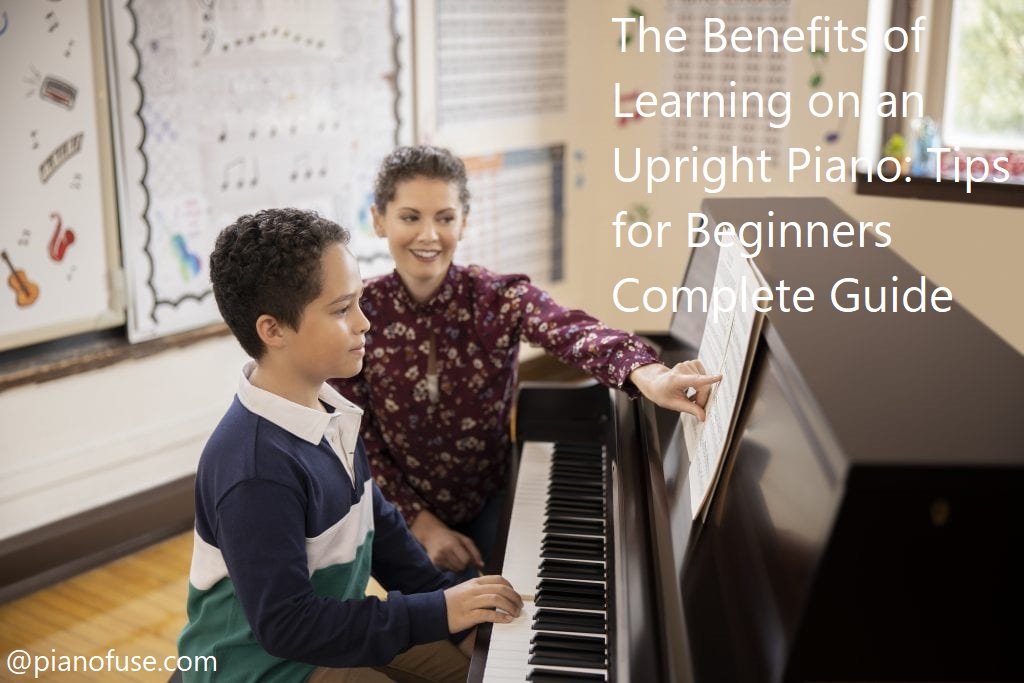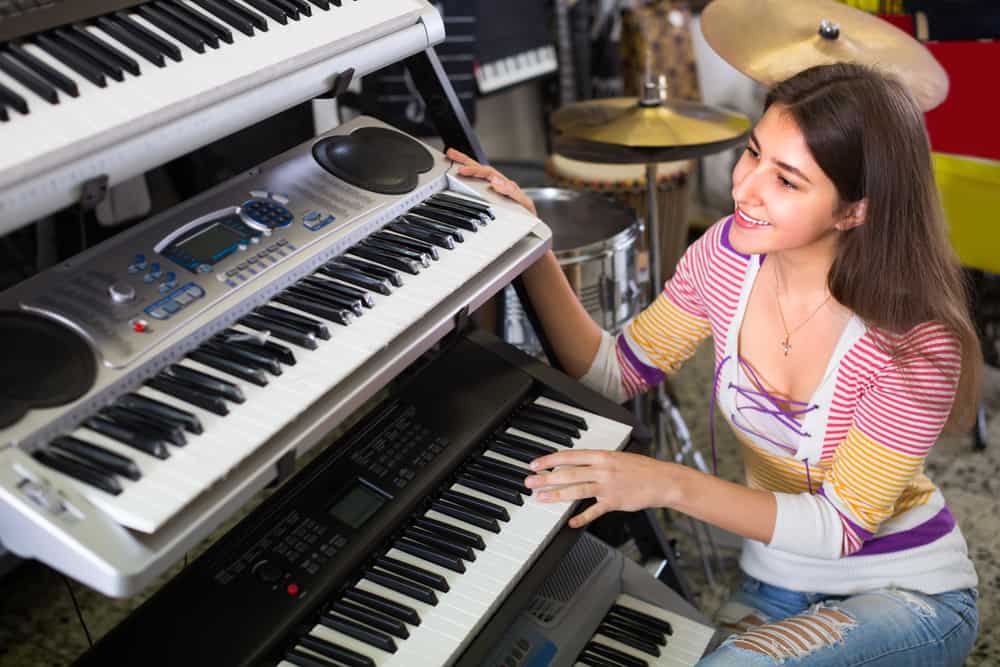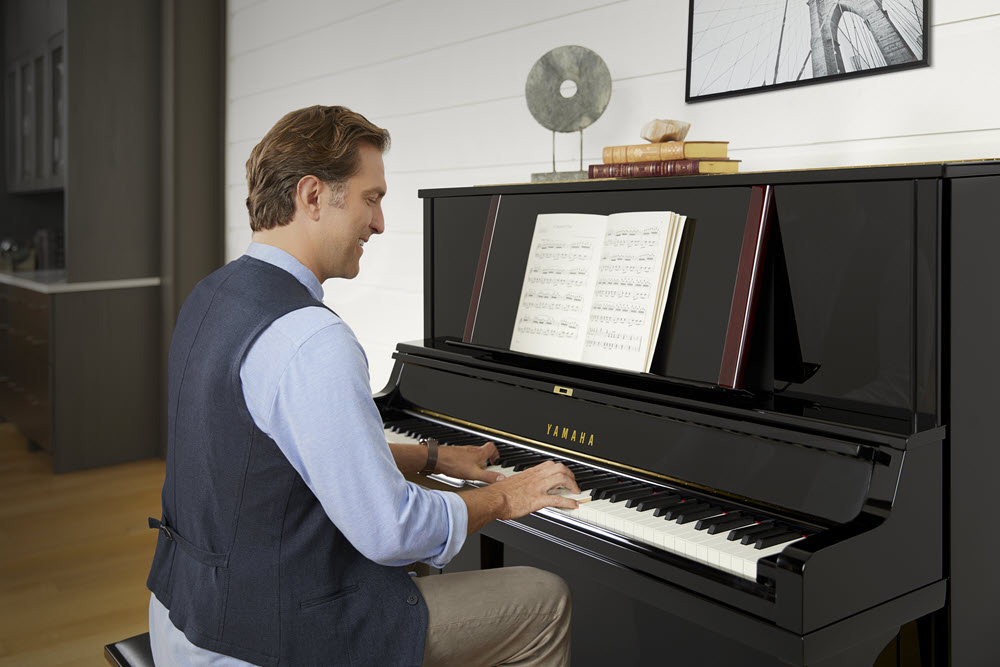Are you looking to take up the piano but don’t know where to start? If so, then you’ll find this article particularly helpful. Here, we’ll go through the benefits of playing on an upright piano, tips for beginners, and provide a complete guide to learning the piano so that you can progress quickly and easily. Get ready to explore the world of music!
Learning how to play the piano is a wonderful way to develop musical skills. Knowing how to play the upright piano means learning techniques and developing an understanding of physical and musical theory, as well as familiarizing yourself with a unique instrument. Whether you’re an absolute beginner or an experienced musician, it’s essential to understand the power of the upright piano, which can shape and enhance your skills.
This guide explains why learning on an upright piano is beneficial for beginners and outlines key features that can help take your playing from good to great. With this complete guide, you’ll learn valuable tips and advice on how to get started with the right hand and left hand posture, finding the right rhythm and tempo when playing chords and melodies, perfecting your scales and arpeggios, developing flexibility with improvisation techniques, understanding sound production approaches such as pedaling techniques, exploring different music styles such as classical or jazz styles -and much more.
Ready to create beautiful music? Let’s dive into it!
Explanation of upright pianos
Upright pianos, also known as vertical pianos, are the more common, traditional type of piano found in homes. They feature a rectangular cabinet that houses the strings and keys, and they have a smaller footprint than their grand piano counterparts. There are two main types of upright pianos: spinet and studio; spinet models have shorter strings and take up less space while studio models have longer strings and offer access to all 88 notes (A to C) found on an acoustic piano.
Although upright pianos usually lack the rich sound of concert grands, they still offer plenty of musical and educational benefits for beginning students of all ages. For example, upright pianos can help children develop their sense of rhythm as well as hand-eye coordination early on. Additionally, the shape of an upright piano encourages proper posture which allows them to sit properly with their hands placed in a comfortable position for playing. This sets up a basis for body alignment that will allow them to transition easily into larger instruments such as digital or grand pianos.
Uprights can also be beneficial at the intermediate level; they provide beginner players with an opportunity to work on technique without overwhelming them with features or keys found in grand instruments.

The purpose of learning on an upright piano
The purpose of learning on an upright piano is to gain an understanding of the instrument, its mechanics and its sound. This method of learning allows you to develop your skills faster and more effectively than if you were to learn on a smaller digital keyboard. Upright pianos offer a full range of tones, from bass to treble, as well as exceptional dynamic control. Additionally, playing on an upright piano provides acoustic feedback that cannot be simulated with digital technologies.
For beginners or advanced musicians alike, playing on an upright piano requires focused practice and attention to detail. It is important that learners dedicate quality practice time in order to develop fundamental finger techniques such as strength and dexterity as well as knowledge regarding chords and scales. Furthermore, playing the piano serves as emotional therapy for some people due to its calming effects. Regardless of experience level or personal preferences in music style or genre, there are many benefits associated with learning on an upright piano — even if it’s just for fun!
The benefits of playing on an upright piano
A great way to improve your technique and theory of playing is to practice on an upright piano. Upright pianos, also known as vertical pianos, are stationary that are typically more affordable than grand pianos and use less space. Since they don’t require being placed in a base or enclosure, upright pianos provide increased sound production in a room compared to their larger counterparts.
Learning on an upright piano has several benefits for the beginner player. For instance, the detailed acoustics of the instrument helps students refine their touch with consistency and accuracy. Being able to physically reach out as far as possible on both keyboards also helps them avoid tensing when reaching for chords with wide finger coverage. Uprights even have pedals that resemble those found on grand pianos that can help improve coordination and balance during play.
Playing upright allows novice players to access greater resources because they don’t have to invest in expensive instruments or be limited by small, digital options like keyboard synthesizers or electric AC/DC type pianos. By experimenting with one quality instrument instead of numerous cheap options under varying conditions of digital sound projection, beginners can refine their technique much more quickly while increasing muscle memory and comfortability based off realistic challenges mentioned earlier.
Thus using an upright piano allows us to accurately reach for wider chords across both basses, develop stronger articulation control due to accoustical reverberation travelling up from where you’re playing whereas digital machines just project based off each key press separately without this element combined with fine tuned pedals which work like those found at larger grand style venues but still contain all features noted at a smaller learning level cost efficiency and space saving requirement saving tremendous hassle in finding similar space under certain budget restrictions which can often hold back progress making it not only quintessential but revolutionary in learning all styles of music welcoming into any newbies tool set home experience and understanding way further than ever before only obtainable through this instrument thus greatly improving finger strength speed variation experimentation voicing pedals better timing overall joys therefore reaching limitless potential!
Benefits of Learning on an Upright Piano
Learning on an upright piano can have many benefits for a beginner pianist. Upright pianos provide access to the same musical dynamics found in much larger grand pianos, but cost substantially less. Since uprights require less floor space, they also are easy to fit into homes that might not have the room to accommodate a grand.
Upright pianos also have some acoustic advantages over electronic keyboards, as the hammers used in upright pianos create a richer, more full sound when struck by other objects such as felt beaters or hand claps. Finally, upright pianos are sturdier and more traditional in appearance than other types of keyboards, making them an attractive addition to any home or teaching studio.

Improves posture and hand positioning
Playing an upright piano is a great way to learn the basics of music and enjoy doing it. From posture to hand positioning, upright pianos allow you to develop your own unique style and acquire the necessary techniques that help produce quality music. As a beginner piano player, it is important to keep in mind the following tips in order to ensure that you are playing safely and correctly.
When seated at an upright piano, make sure your feet are firmly planted on the floor and your back is as straight as possible. Placing a small cushion underneath you for lumbar support may help maintain proper posture throughout your practice sessions. It is also essential that your wrists remain straight during playtime, which will prevent any calluses or pains from developing over time. Furthermore, keep your elbows tucked in closely so both arms can easily reach across the entire range of keys without overextending themselves. Finally, be sure to loosen up each finger independently before playing long pieces of music; curling them back into a claw-like position can help relive any stiffness or tension that could hinder practice progress down the line.
Helps develop finger strength and dexterity
When learning on a traditional upright piano, students are required to not only press the keys with the prescribed force needed for playing the instrument, but also to quickly move their fingers between each one. This can be an extremely challenging process for beginners and one that takes time, patience and practice to master.
With continued use, however, playing on an upright piano can improve finger strength and dexterity significantly. Furthermore, many experienced pianists claim that learning on an upright helps them become better players in the long run as they’ve had to specifically learn how to manoeuvre around such a complex instrument from the start.
It is important to remember though that everyone’s needs and preferences are different when it comes to playing a piano; upright or digital may be better suited for some individuals than others.
Builds a strong foundation for advanced techniques
Building a strong foundation for advanced techniques should be a priority for any aspiring pianist. Upright pianos provide an excellent platform for learning the fundamentals of finger dexterity and tone control.
By starting out on an upright piano, beginners can familiarize themselves with how to read music, play melodies, and exercises such as scales and arpeggios. These basic elements not only form the basis of most compositions, but they also lend insight into larger-scale elements of the instrument such as dynamics, articulation, improvisation, and counterpoint.
Furthermore, mastering these basics will give beginners more scope to explore more substantial techniques such as harmony or advanced fingering techniques. An upright piano is a perfect starting point for anyone looking to further their musical knowledge in this direction – it provides all the fundamentals upon which complex musical expressions can be built upon.
Provides a consistent sound and touch
- Playing on an upright piano provides consistent sound and touch. With some electronic keyboards and digital pianos, there can be a difference in feel and sound due to the configuration of the keyboard and its internal mechanisms. An acoustic upright piano is designed with a specific number of tools, strings, and action to provide a consistent sound and feel when playing. This makes it easier for players of all levels to develop the muscle memory for playing properly.
By learning on an upright piano, beginner musicians will have an easier time achieving their musical goals over time than if they were playing an electric keyboard or digital piano.

Conclusion
Overall, learning the piano on an upright instrument has many benefits for students of all ages. Practicing on an upright piano provides essential physical feedback when pressing the keys and a realistic sound that can help you while sight reading or improvising. The responsiveness of a quality instrument can provide immediate corrections regarding your technique and help to develop your ear as well. Additionally, this option is cost effective over the long term since most of these instruments are built to last for decades.
It’s important to remember that patience and dedication are the key ingredients for success when beginning the world of piano playing, regardless of whether you choose to use an upright or digital model. If you take the time to find a high-quality instrument suited to your own playing style, you will have all the tools necessary to start practicing and make beautiful music.
FAQ’S
Are upright pianos good for beginners?
Upright pianos can be good for beginners, as they provide a more authentic and tactile playing experience than digital pianos, but they can be more expensive and require more maintenance than digital pianos.
What are the benefits of an upright piano?
The benefits of an upright piano include a more compact size, affordability, and versatility in terms of placement and use in smaller spaces. They are also easier to maintain and repair than grand pianos.
What should a piano beginner learn first?
A piano beginner should learn the basics of reading sheet music, hand positioning, and basic music theory such as scales and chords.
What skills does learning piano give you?
Learning piano can improve hand-eye coordination, fine motor skills, concentration, memory, and creativity. It also helps with music theory, ear training, and appreciation of music.
Can piano increase brain power?
There is evidence to suggest that playing the piano can increase brain power, as it requires the use of multiple areas of the brain simultaneously and can improve neural connectivity.
Does playing the piano improve your brain?
Playing the piano can improve brain function and cognitive abilities such as memory, spatial reasoning, and language processing.
How many hours should a beginner play piano?
A beginner should aim to practice for at least 30 minutes to an hour per day, gradually increasing their practice time as they progress.
What is the best age to start piano?
There is no specific age to start learning piano, as anyone can learn to play at any age. However, it is generally easier to learn at a younger age when the brain is more malleable.
What should piano beginner do?
A piano beginner should start with the basics of reading sheet music, hand positioning, and basic music theory. They should also practice regularly and seek guidance from a qualified piano teacher.
What is the easiest piano style to learn?
The easies piano style to learn depends on the individual’s musical tastes and preferences, but some popular options for beginners include classical, pop, and jazz.
See Also:
- Best acoustic piano 2023
- Best digital piano for classical pianists 2023
- Best digital piano for under 1000 2023
- Best digital piano headphones 2023
- Best digital piano under 500 2023


